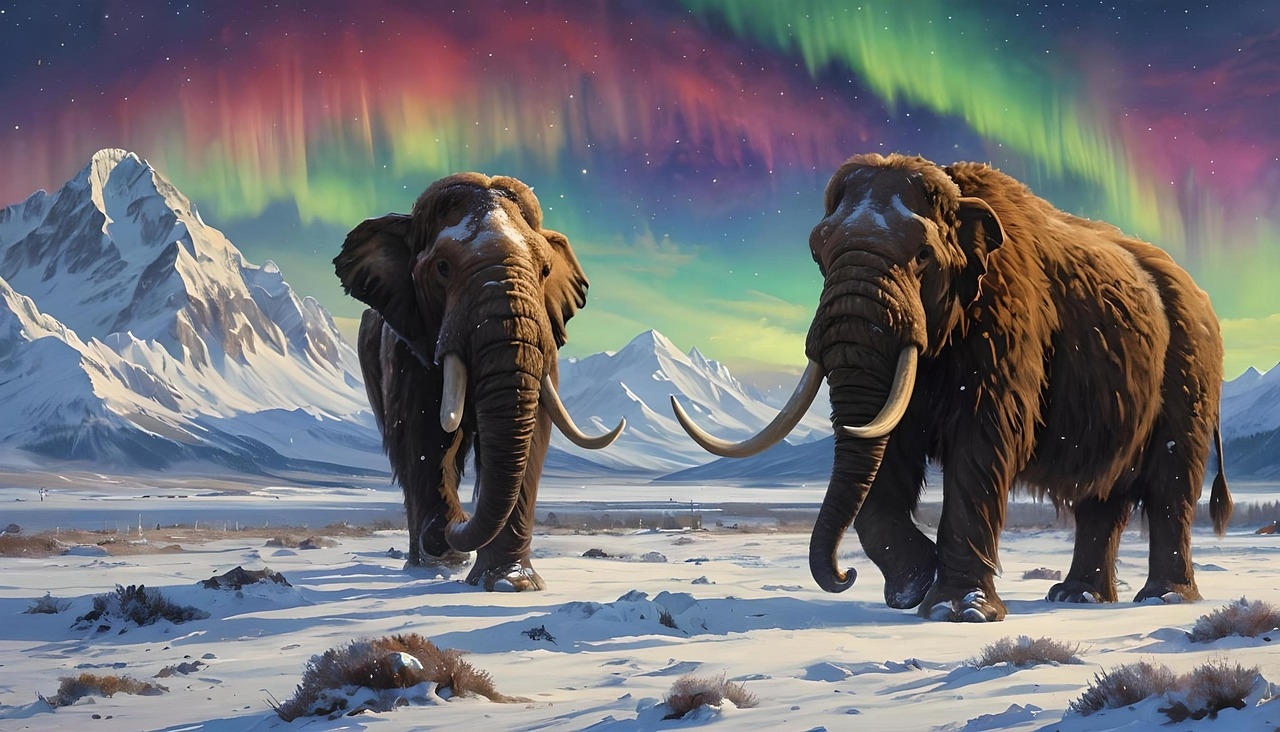We reach more than 65,000 registered users in Dec!! Register Now

Study provides snapshots of mammoth genetic diversity throughout the last million years
- July 03, 2025
- 2 Views
- 0 Likes
- 0 Comment
A new genomic study has uncovered long-lost genetic diversity in mammoth lineages spanning over a million years, providing new insights into the evolutionary history of these animals. Mammoth tusk found in Sibiria. Photo: Love DalénThe new study has successfully extracted and analysed 34 new mammoth mitochondrial genomes (mitogenomes), including specimens dating back to the Early and Middle Pleistocene geological periods. A total of 11 specimens come from these periods, with their ages spanning from 1.3 million to 125 000years ago. The findings, published in Molecular Biology and Evolution, shed light on mammoth evolutionary history and demonstrate the power of ancient DNA in characterising past genetic diversity.
Mammoth tusk found in Sibiria. Photo: Love DalénThe new study has successfully extracted and analysed 34 new mammoth mitochondrial genomes (mitogenomes), including specimens dating back to the Early and Middle Pleistocene geological periods. A total of 11 specimens come from these periods, with their ages spanning from 1.3 million to 125 000years ago. The findings, published in Molecular Biology and Evolution, shed light on mammoth evolutionary history and demonstrate the power of ancient DNA in characterising past genetic diversity. J Camilo Chacón-DuquePhoto: Natalia Romagosa“Our analyses provide an unprecedented glimpse into how major deep-time demographic events might have shaped the genetic diversity of mammoths through time”, said Dr J. Camilo Chacón-Duque, researcher at the Department of Zoology, Stockholm University, and Centre for Palaeogenetics and lead author of the study.
J Camilo Chacón-DuquePhoto: Natalia Romagosa“Our analyses provide an unprecedented glimpse into how major deep-time demographic events might have shaped the genetic diversity of mammoths through time”, said Dr J. Camilo Chacón-Duque, researcher at the Department of Zoology, Stockholm University, and Centre for Palaeogenetics and lead author of the study.
A million years of mammoth evolution
Most of today’s biodiversity evolved during the last 2.5 million years. Understanding the evolutionary processes that shaped this diversity requires access to genetic information throughout this timeframe. Until now, very few DNA samples have surpassed the 100-thousand-year threshold due to preservation challenges. By recovering DNA from mammoth specimens spanning over more than a million years, this study showcases the importance of temporal sampling to characterise the evolutionary history of species. Woolly mammoth molar (Mammuthus primigenius) from the Old Crow river, Yukon Territory Canada. Photo: Hans WildschutBy analysing these new mitogenomes alongside over 200 previously published mammoth mitogenomes, the researchers were able to find that diversification events across mammoth lineages seem to coincide with well described demographic changes during the Early and Middle Pleistocene. Their findings support an ancient Siberian origin for major mammoth lineages and reveal how shifts in population dynamics might have contributed to the expansion and contraction of distinct genetic clades.“With the ever-decreasing costs of sequencing technologies, mitogenomes have been somewhat forgotten. However, our study shows that they remain crucial for evolutionary biology since they are more abundant than nuclear DNA,” said Dr Jessica A. Thomas Thorpe, researcher at the Wellcome Sanger Genome Institute (UK) and co-first author of the study.
Woolly mammoth molar (Mammuthus primigenius) from the Old Crow river, Yukon Territory Canada. Photo: Hans WildschutBy analysing these new mitogenomes alongside over 200 previously published mammoth mitogenomes, the researchers were able to find that diversification events across mammoth lineages seem to coincide with well described demographic changes during the Early and Middle Pleistocene. Their findings support an ancient Siberian origin for major mammoth lineages and reveal how shifts in population dynamics might have contributed to the expansion and contraction of distinct genetic clades.“With the ever-decreasing costs of sequencing technologies, mitogenomes have been somewhat forgotten. However, our study shows that they remain crucial for evolutionary biology since they are more abundant than nuclear DNA,” said Dr Jessica A. Thomas Thorpe, researcher at the Wellcome Sanger Genome Institute (UK) and co-first author of the study.A big contribution to evolutionary biology
The study not only advances our understanding of mammoth evolution but also contributes to the broader field of ancient DNA research. The team developed and applied an improved molecular clock dating framework, refining how genetic data can be used to estimate the ages of specimens beyond the radiocarbon dating limit. This methodological advancement offers a powerful tool for future research on extinct and endangered species. Love Dalén in Sibiria.Photo: Gleb Danilov“These results add to our earlier work where we reported million-year-old genomes for the first time. I’m very excited that now we have genetic data from many more mammoth specimens sampled across the last million years, which helps us understand how mammoth diversity has changed through time,” said senior author professor Love Dalén at Stockholm University and Centre for Paleogenetics.Read article in Molecular Biology and Evolution*Centre for Paleogenetics is a cooperation between Stockholm University and the Swedish Museum of Natural Histrory.Read more about Centre for Palaeogenetics
Love Dalén in Sibiria.Photo: Gleb Danilov“These results add to our earlier work where we reported million-year-old genomes for the first time. I’m very excited that now we have genetic data from many more mammoth specimens sampled across the last million years, which helps us understand how mammoth diversity has changed through time,” said senior author professor Love Dalén at Stockholm University and Centre for Paleogenetics.Read article in Molecular Biology and Evolution*Centre for Paleogenetics is a cooperation between Stockholm University and the Swedish Museum of Natural Histrory.Read more about Centre for PalaeogeneticsList of Referenes
- J. Camilo Chacón-Duque et al. A million years of mammoth mitogenome evolution. Molecular Biology And Evolution, 2025 [abstract]
Cite This Article as
No tags found for this post









